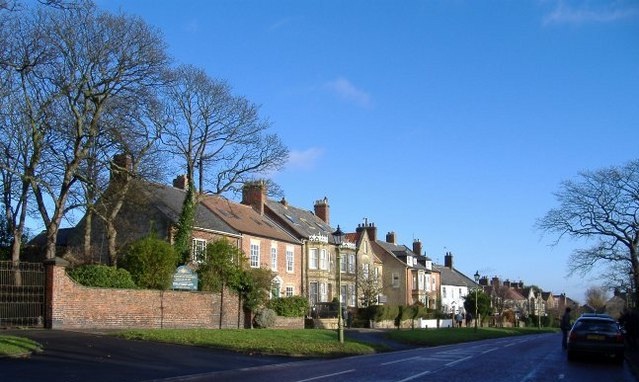|
Souter Lighthouse
Souter Lighthouse is a lighthouse located in the village of Whitburn, Tyne and Wear, England. (It was generally known as Souter Point Lighthouse when in service). Souter Point was the first lighthouse in the world to be actually designed and built specifically to use alternating electric current, the most advanced lighthouse technology of its day. The light was generated by a carbon arc lamp: first lit on 11 January 1871, it was described at the time as 'without doubt one of the most powerful lights in the world'. After being decommissioned by Trinity House (the national lighthouse authority) in 1988, Souter Lighthouse was acquired by the National Trust, who now manage it as a visitor attraction with holiday lets. Location The lighthouse is located on Lizard Point, but takes its name from Souter Point, which is located a mile to the south. This was the intended site for the lighthouse, but it was felt that Lizard Point offered better visibility, as the cliffs there are high ... [...More Info...] [...Related Items...] OR: [Wikipedia] [Google] [Baidu] |
Whitburn, Tyne And Wear
Whitburn is a village in South Tyneside in the metropolitan county of Tyne and Wear on the coast of North East England. It is located north of the city of Sunderland and south of the town of South Shields. Historic counties of England, Historically, Whitburn was a part of County Durham. Other nearby population centres include Seaburn, Cleadon and Marsden, Tyne and Wear, Marsden. The village lies on a south-facing slope, part of Durham, England, Durham's Magnesian Limestone plateau, which overlooks Sunderland. The population for the combined Whitburn and Marsden Ward in the 2011 UK Census was 7,448. For much of its history, Whitburn was a fishing and agricultural community. The village contains three schools, three churches, cricket club, recreational grounds, a pub and a variety of shops. Etymology The first written instance of Whitburn is an the Boldon Book of 1183, where the village is recorded as ''Whitberne''. This name may refer to a stream or burn running through the vill ... [...More Info...] [...Related Items...] OR: [Wikipedia] [Google] [Baidu] |
Richard Collinson
Admiral Sir Richard Collinson (7 November 1811 – 13 September 1883) was an English naval officer and explorer of the Northwest Passage. Early life He was born in Gateshead, Tyne and Wear, England, then part of County Durham. He joined the Royal Navy in 1823 at age twelve and rose in the ranks, becoming a lieutenant in 1835, commander in 1841, and captain in 1842. China Collinson was in command of the ''Lady Bentinck'', a vessel of 1800 tons burden and 520 horsepower, when it appeared with the ''Phlegethon'' off Chapoo in eastern China, causing a "sensation". On 1 April 1842, the British Plenipotentiary of Trade Henry Pottinger reported that Collinson, as commander of the ''Nemesis'' based in Chusan, had contributed to a successful skirmish with Chinese troops on the island of Taisam near Ningbo in February of that year. As commander of HMS ''Plover'', and with the aid of Lt Henry Kellett in HMS ''Starling'', he surveyed the China coast from 1842 to 1846, producing charts ... [...More Info...] [...Related Items...] OR: [Wikipedia] [Google] [Baidu] |
Candle Power
Candlepower (abbreviated as cp or CP) is a unit of measurement for luminous intensity. It expresses levels of light intensity relative to the light emitted by a candle of specific size and constituents. The historical candlepower is equal to 0.981 candelas. In modern usage, ''candlepower'' is sometimes used as a synonym for ''candela''. History The term candlepower was originally defined in the United Kingdom of Great Britain and Ireland, United Kingdom, by the Metropolitan Gas Act 1860, as the light produced by a pure spermaceti candle that weighs and burns at a rate of . Spermaceti is a material from the heads of sperm whales, and was once used to make high-quality candles. At the time the UK established candlepower as a unit, the French standard of light was based on the illumination from a Carcel burner. They defined the unit was that illumination that emanates from a lamp burning pure colza oil (obtained from the seed of the plant ''Brassica rapa, Brassica campestris'') at a ... [...More Info...] [...Related Items...] OR: [Wikipedia] [Google] [Baidu] |

